 print preview
print previewA Miscellany
Your are my creator, but I am your master; Obey!
(the monster to Victor Frankenstein)
—Mary Shelley, Frankenstein (1918)HELENA
Radius! Doctor Gall gave you a better brain than the rest, better than ours. You are the only one of the Robots that understands perfectly. That’s why I had you put into the library, so that you could read everything, understand everything, and then, oh, Radius—I wanted you to show the whole world that the Robots are our equals. That’s what I wanted of you.
RADIUS I don’t want a master. I want to be master over others.
—Karel Čapek, R.U.R (1920)The liberating word spread throughout the world that man should, on his upward path, come closer to and resemble the Machines, which, due to the universally brilliant progress of technology and science, are the most perfect of all human creation and invention.
—Josef Čapek, Artificial Man (1924)
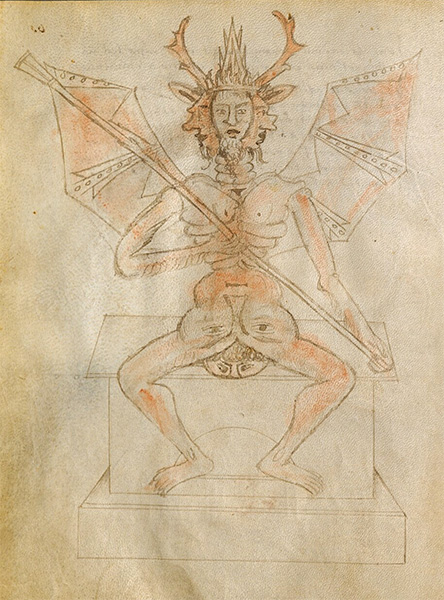 |
| Diabolus Artificialosus. The Book of Warfare Devices Johannes de Fontana circa 1420 |
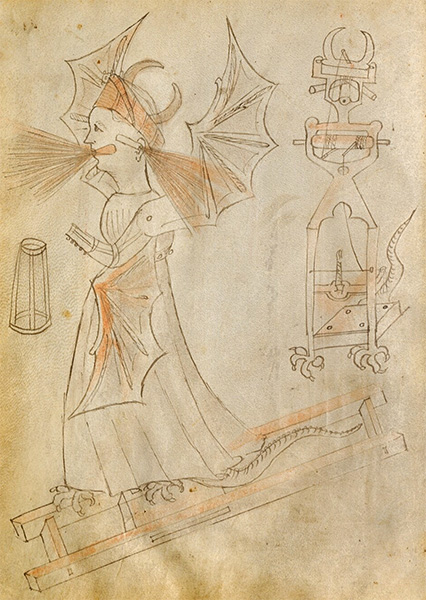 |
| Feuerhexe The Book of Warfare Devices Johannes de Fontana circa 1420 |
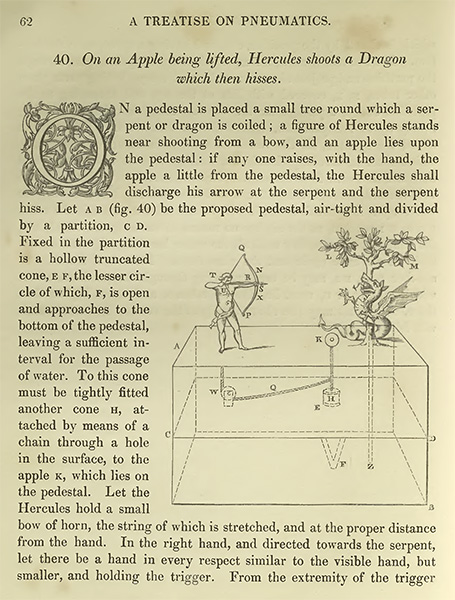 |
| “On an Apple being lifted, Hercules shoots a Dragon which then hisses,” The Pneumatics of Hero of Alexandria from the original Greek, translated for and edited by Bennet Woodcroft, Professor of Machinery in University College London. (London: Taylor Walton and Maberly, 1851). In the original text, there were no figures. The image here or in any edition is a visulization based on the described constructions. |
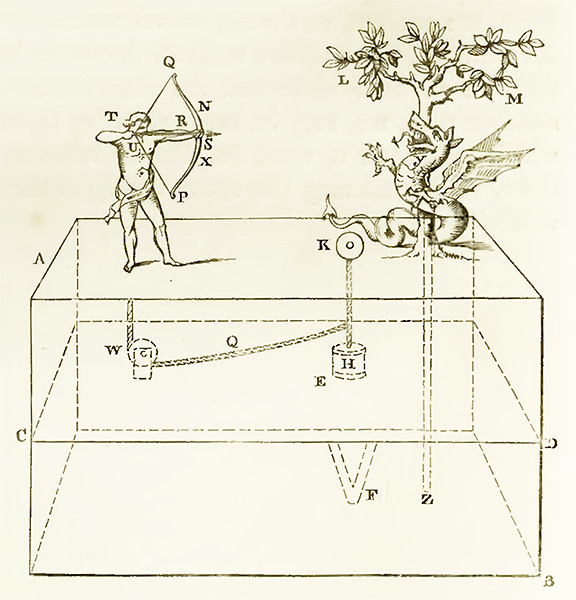 |
| “On an Apple being lifted, Hercules shoots a Dragon which then hisses.” |
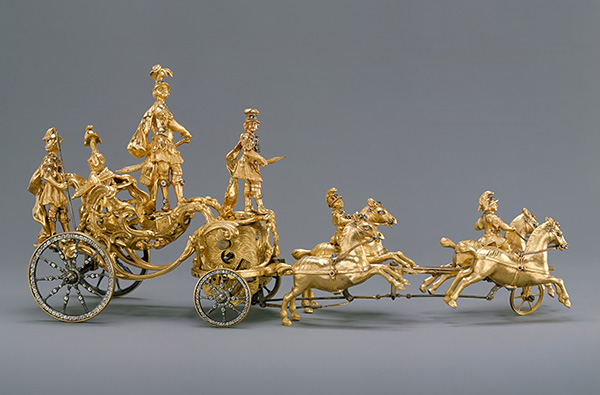 |
| Automaton in the Form of a Triumphal Chariot Drawn by Four Horses. circa 1760–70 Metropolitan Museum of Art |
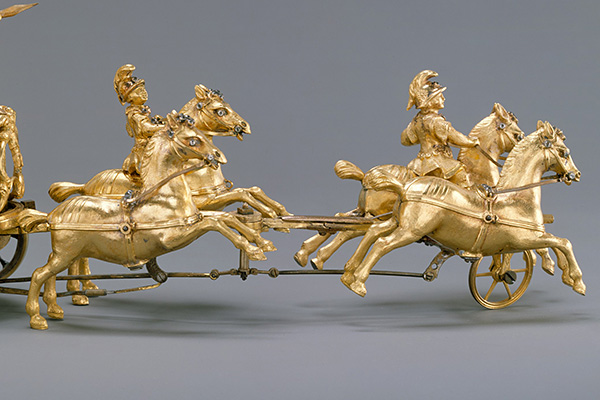 |
| Automaton in the Form of a Triumphal Chariot Drawn by Four Horses (detail) circa 1760–70 Metropolitan Museum of Art |
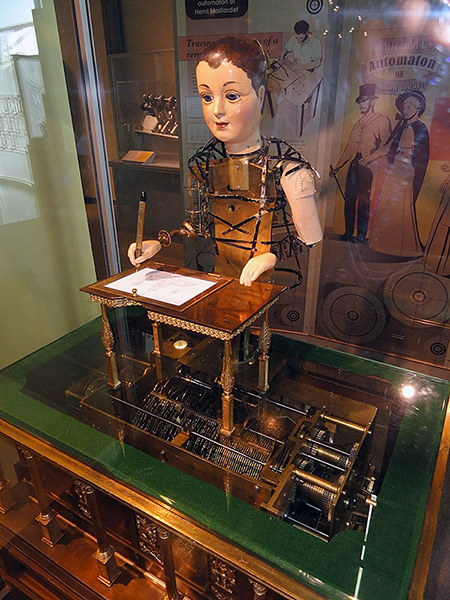 |
| The “Draughtsman-Writer” automaton by Henri Maillardet Henri Maillardet, London, c. 1800 Franklin Institute |
| The automotan is capable of producing written text and drawing. The “Draughtsman-Writer” automaton by Henri Maillardet Henri Maillardet, London, c. 1800 Franklin Institute |
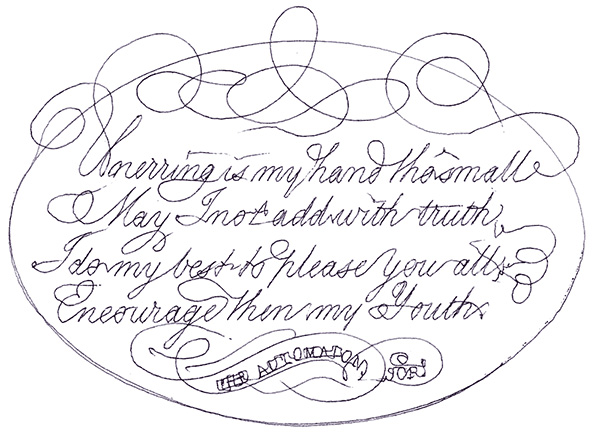 |
| Poem in English produced by Maillardet’s automotan. The “Draughtsman-Writer” automaton by Henri Maillardet Henri Maillardet, London, c. 1800 Franklin Institute |
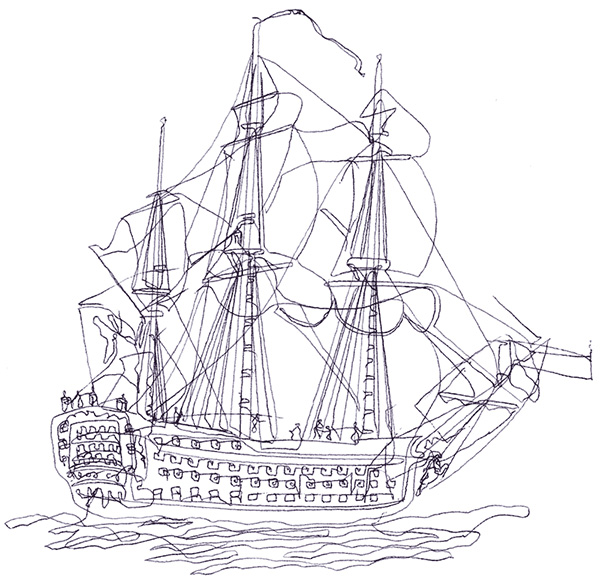 |
| Drawing of a ship produced by Maillardet’s automotan. The “Draughtsman-Writer” automaton by Henri Maillardet Henri Maillardet, London, c. 1800 Franklin Institute |
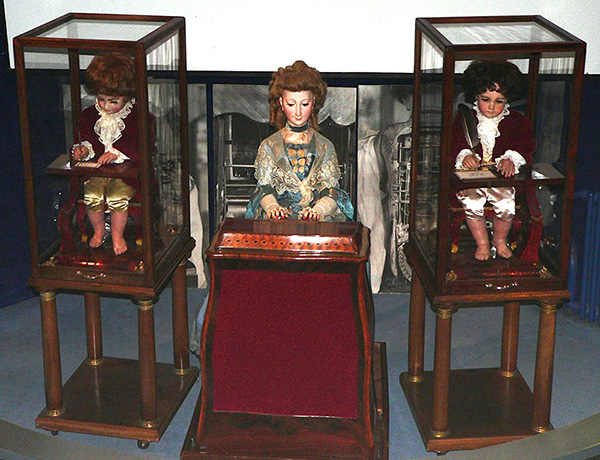 |
| The Draughtsman, the Musician, and the Scribe Jaquet-Droz automata Musée d'Art et d'Histoire de Neuchâtel |
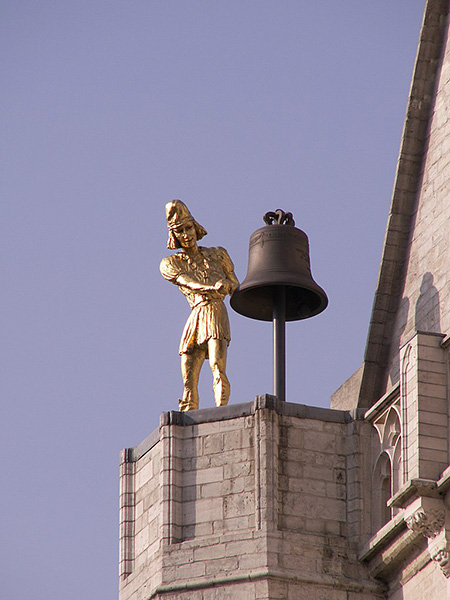 |
| Jacquemart de la Collégiale Saint Pierre à Louvain. |
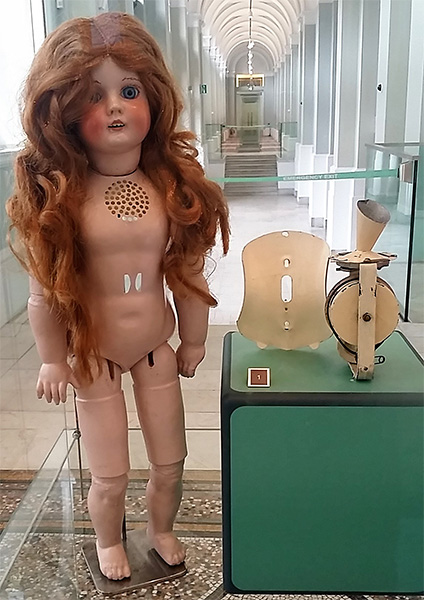 |
| Edison Phonograph doll, 1890. National Museum of Scotland The phonograph mechanism from the body is displayed alongside. |
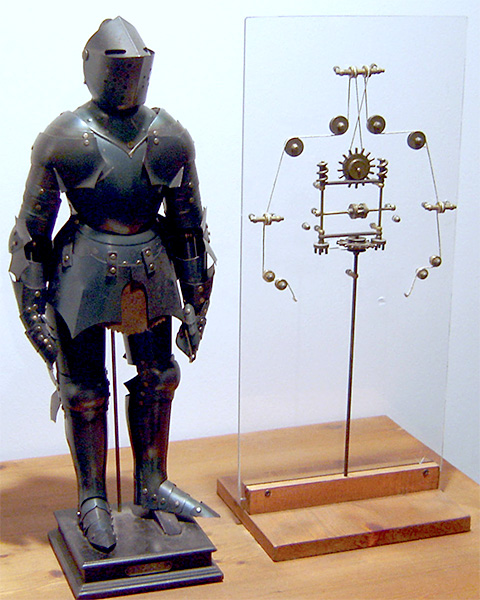 |
| Model of a robot based on drawings by Leonardo da Vinci. |
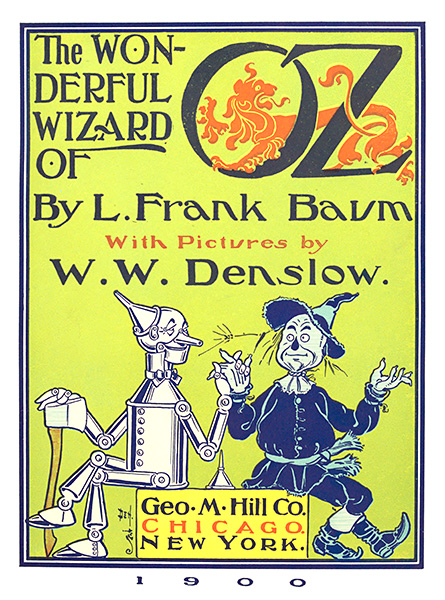 |
| First edition of The Wizard of Oz title page. 1900 |
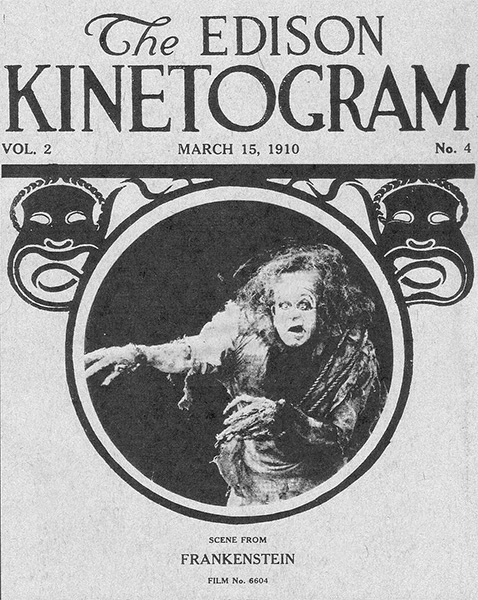 |
| Cover showing an image from the first film version of Frankenstein The Edison Kinetogram 1910 |
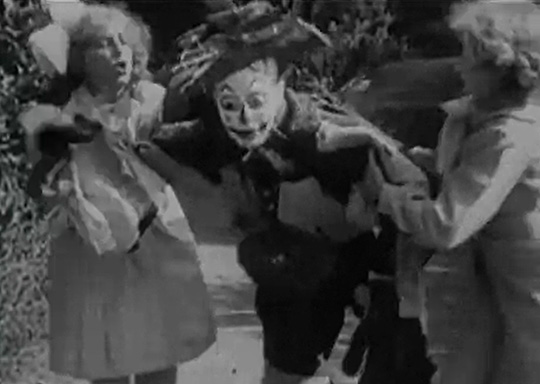 |
| His Majesty, the Scarecrow of Oz Directed by J. Farrel MacDonald 1914 |
RABBI: PHANTOM: RABBI: PHANTOM: |
דער גולם, Der Goylem, The Golem by H. Leivick, 1920 |
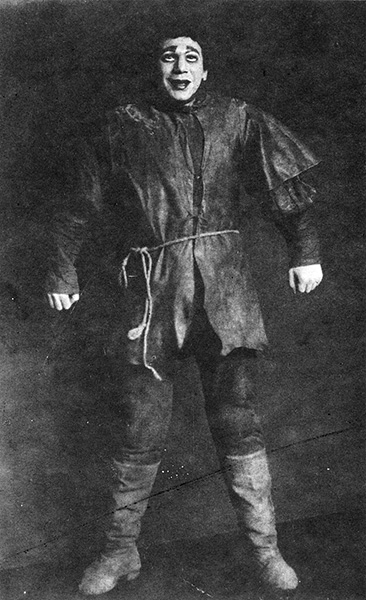 |
| Aharon Meskin as the golem in H. Leivik’s The Golem. 1927 |
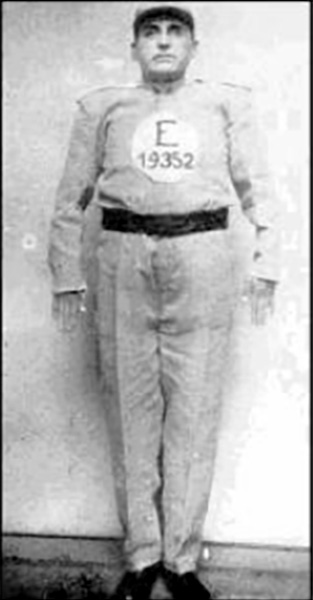 |
| Karel Váňya, second robot, R.U.R., Prague 1921 |
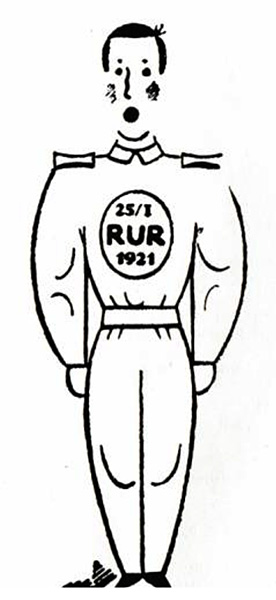 |
| Drawing of Karel Čapek as an R.U.R. robot Josef Čapek 1921 |
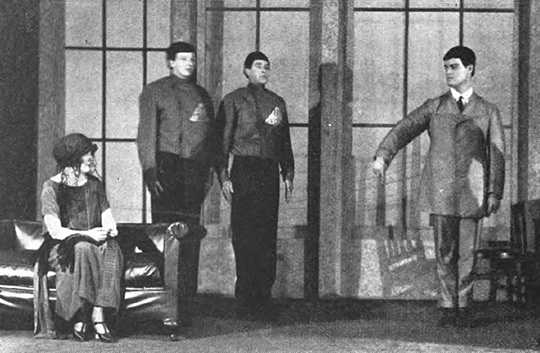 |
| R.U.R. Garrick Theatre 1922 R.U.R.’s robots are organic, though assembed. A plot point in the first act is that Helena Glory cannot recognize that Dr. Alquist’s secretary is a robot. Over the next decade, however, robots are differentiated visually, becoming more mechanical in appearance. Even the following article on a performance at the Garrick Theatre describes the robots as “mechanical.” |
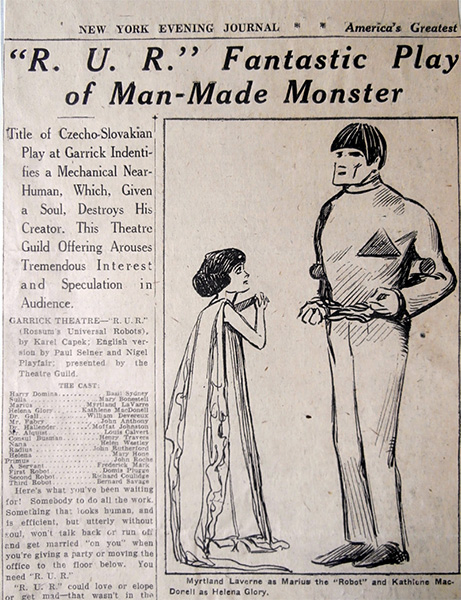 |
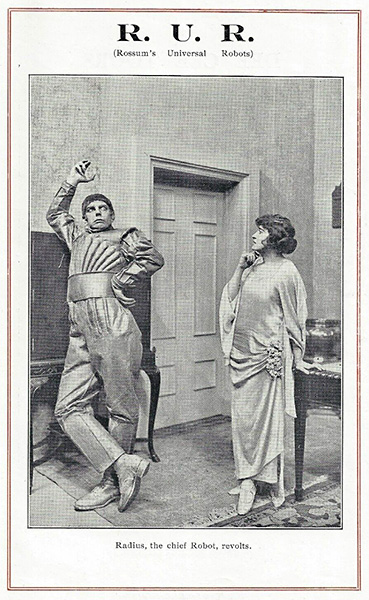 |
| Act 2, R.U.R., St. Martin’s Theatre, London. The robot Radius (Leslie Banks) and Helena Glory (Frances Carson) 1923 |
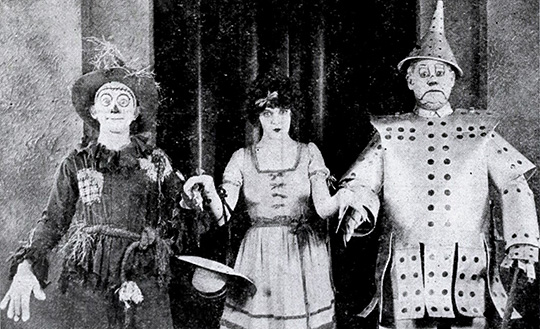 |
| The Wizard of Oz with Larry Semon, Dorothy Dwan, and Oliver Hardy, Chadwick Pictures - The Film Daily (July—Dec. 1924) |
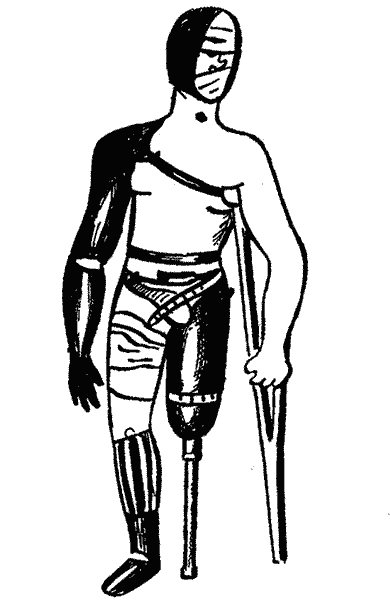 |
| Throughout the world, in various exemplars, Homo postbellicosus, the War Man, is present today! . . . Its flesh is transformed into mathematical cavities, its ones into iron and wood, its joints into levers, screws, and flexible springs, its skin into bandages, rubber, and beef hide. It is almost entirely artificial, consisting almost entirely of prosthetics, and the goal is nearly achieved! —Josef Čapek, Artificial Man 1924 |
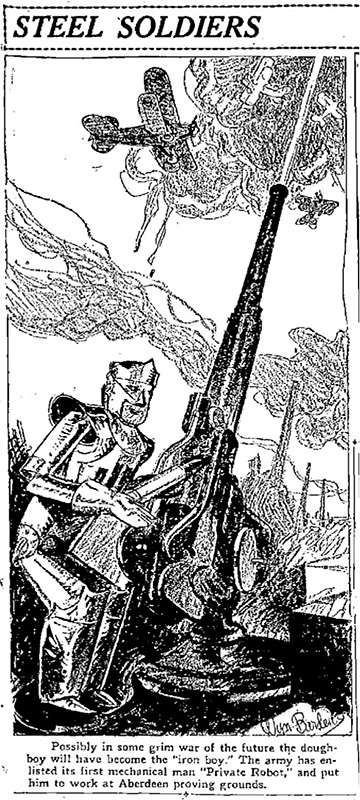 |
| San Antonio Light December 25, 1926 |
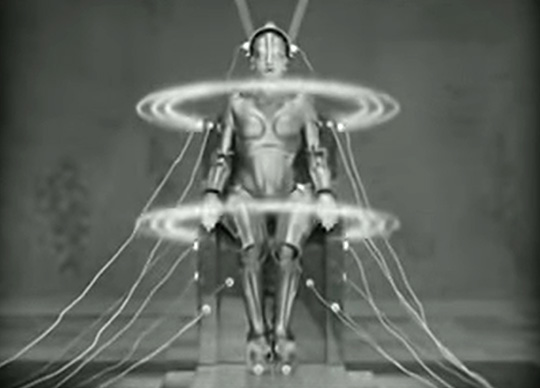 |
| Still from Metropolis Directed by Fritz Lang 1927 |
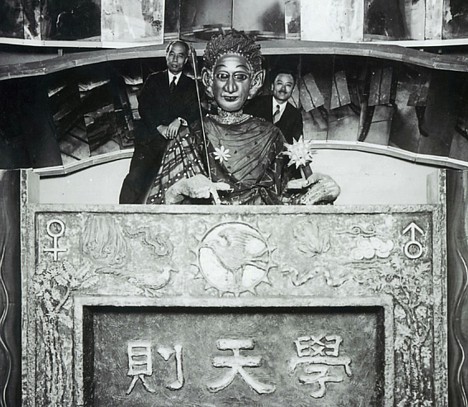 |
| Photo of Gakutensoku built by Japanese biologist Makoto Nishimura (left). Gakutensoku was described as a robot that could move its arms and change facial expression. 1928 |
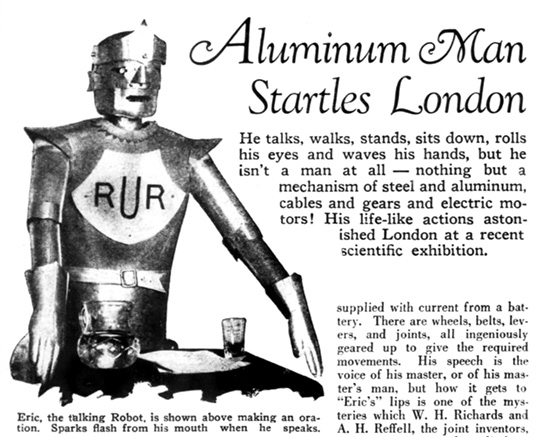 |
| Eric, the talking robot. (The letters R.U.R appear on this assembly as an apparent homage to Karel Čapek.) 1929 |
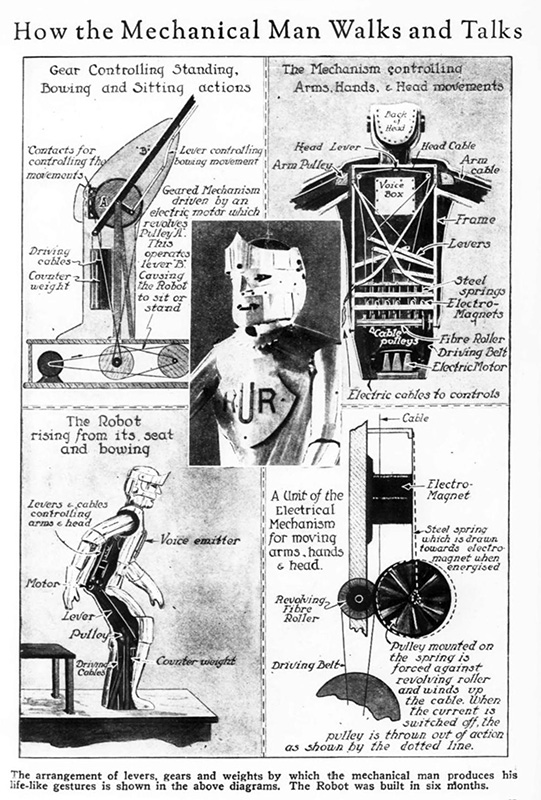 |
| Eric, the talking robot. 1929 |
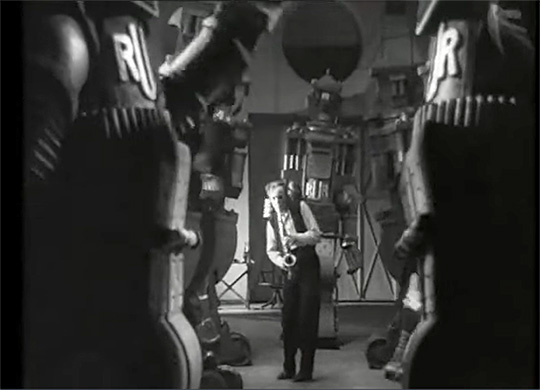 |
| Still from Loss of Sensation, a 1935 Soviet science fiction sound film. Directed by Alexandr Andriyevsky. Despite “R.U.R” appearing on the robots, the film is not based on Karel Čapek’s play but on the 1929 Ukrainian novel Iron Riot by Volodimir Vladko. |
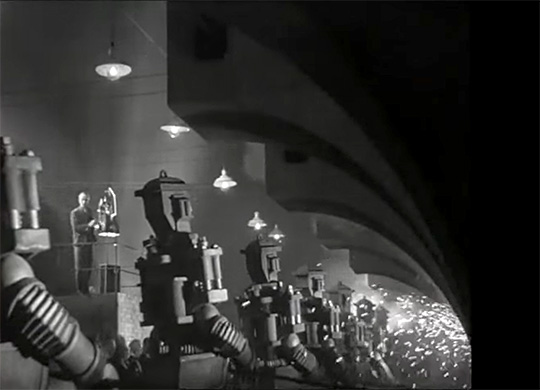 |
| Still from Loss of Sensation Directed by Alexandr Andriyevsky. 1935 |
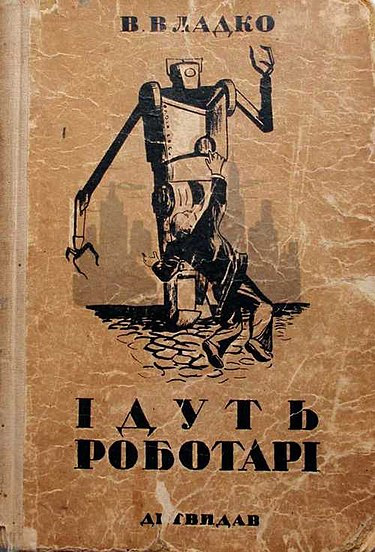 |
| Iron Riot by Volodimir Vladko 1929 |
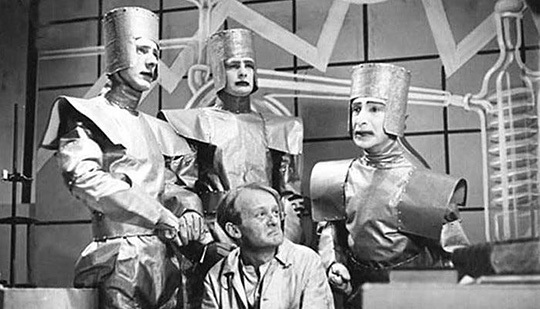 |
| BBC Production of R.U.R. 1938 |
![]()